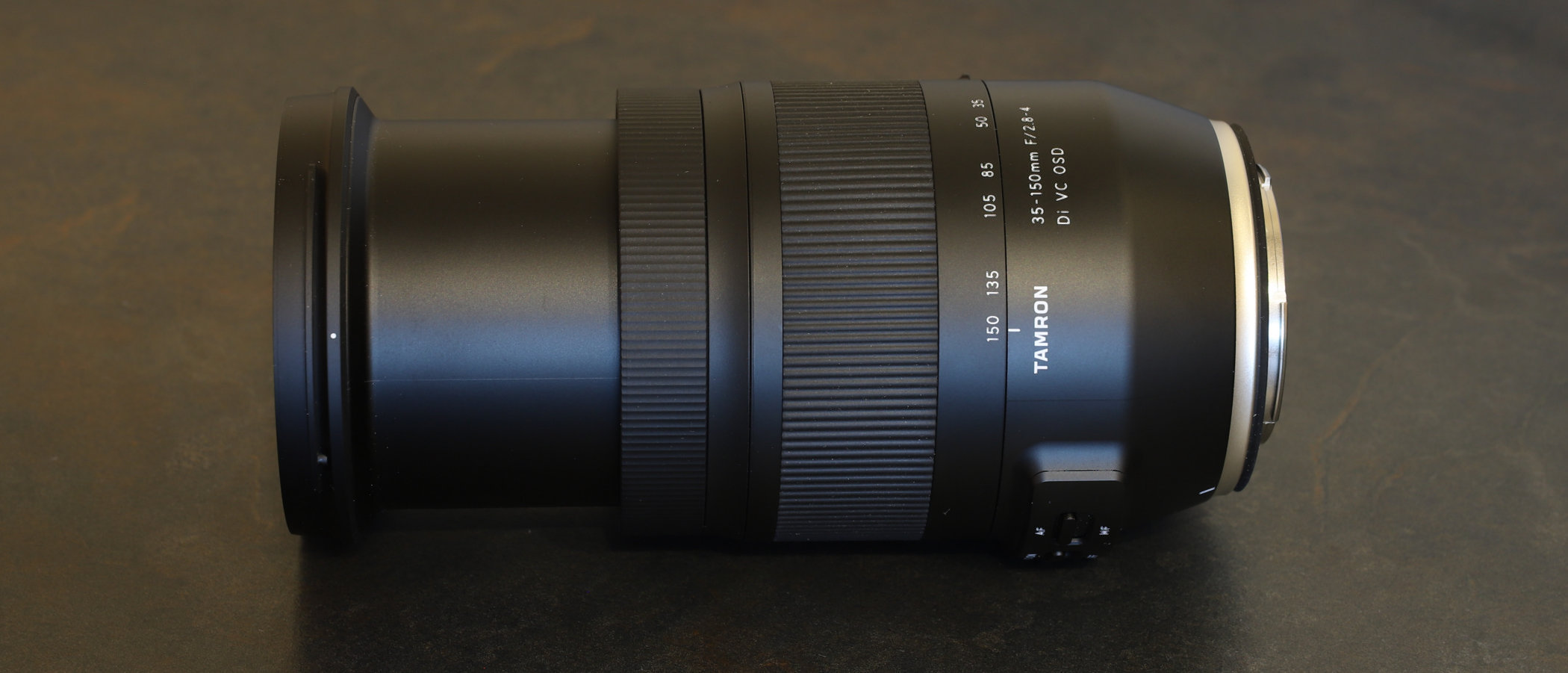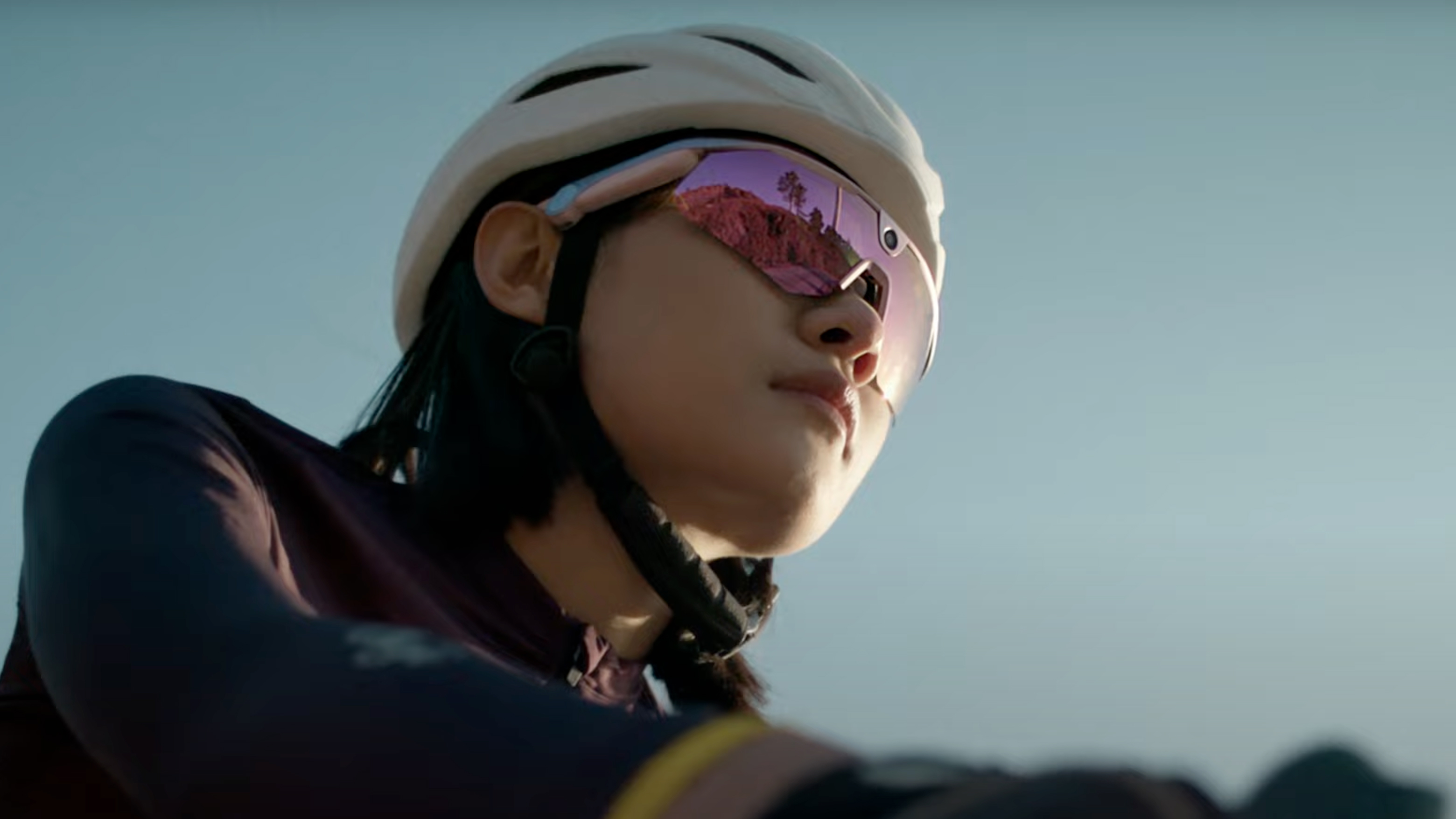Digital Camera World Verdict
There are plenty of 24-105mm or 24-120mm lenses for Canon and Nikon DSLRs on the market. To some extent, the Tamron 35-150mm f/2.8-4 Di VC OSD gives with one hand and takes away with the other, delivering greater telephoto reach but limiting the wide-angle potential. Even so, its zoom range follows on logically from the company’s sibling 17-35 mm f/2.8-4 Di OSD. All areas of image quality and performance are highly impressive, making the lens a great buy at the price.
Pros
- +
Useful zoom range
- +
5-stop optical stabilizer
- +
Great image quality and handling
Cons
- -
Not a constant-aperture design
- -
Maximum viewing angle can feel limiting
Why you can trust Digital Camera World
Considering that most of us use a standard zoom lens for the vast majority of our everyday shooting, choosing the ideal option can be tricky. 24-70mm f/2.8 lenses are often regarded as the ultimate standard zoom, but tend to be quite big and heavy, while lacking any real telephoto reach. This Tamron 35-150mm f/2.8-4 Di VC OSD lens shifts the goalposts in an effort to be something of a game-changer.
• Read more: Best Black Friday lens deals
Tamron 35-150mm f/2.8-4 Di VC OSD: Specs
Mount: Canon EF, Nikon F
Lens construction: 18 elements in 14 groups
Angle of view: 63-16 degrees
Diaphragm blades: 9
Minimum aperture: f/16-22
Minimum focusing distance: 0.45m
Maximum magnification ratio: 0.27x
Filter size: 77mm
Dimensions: 84x127mm
Weight: 796g (C) 790g (N)
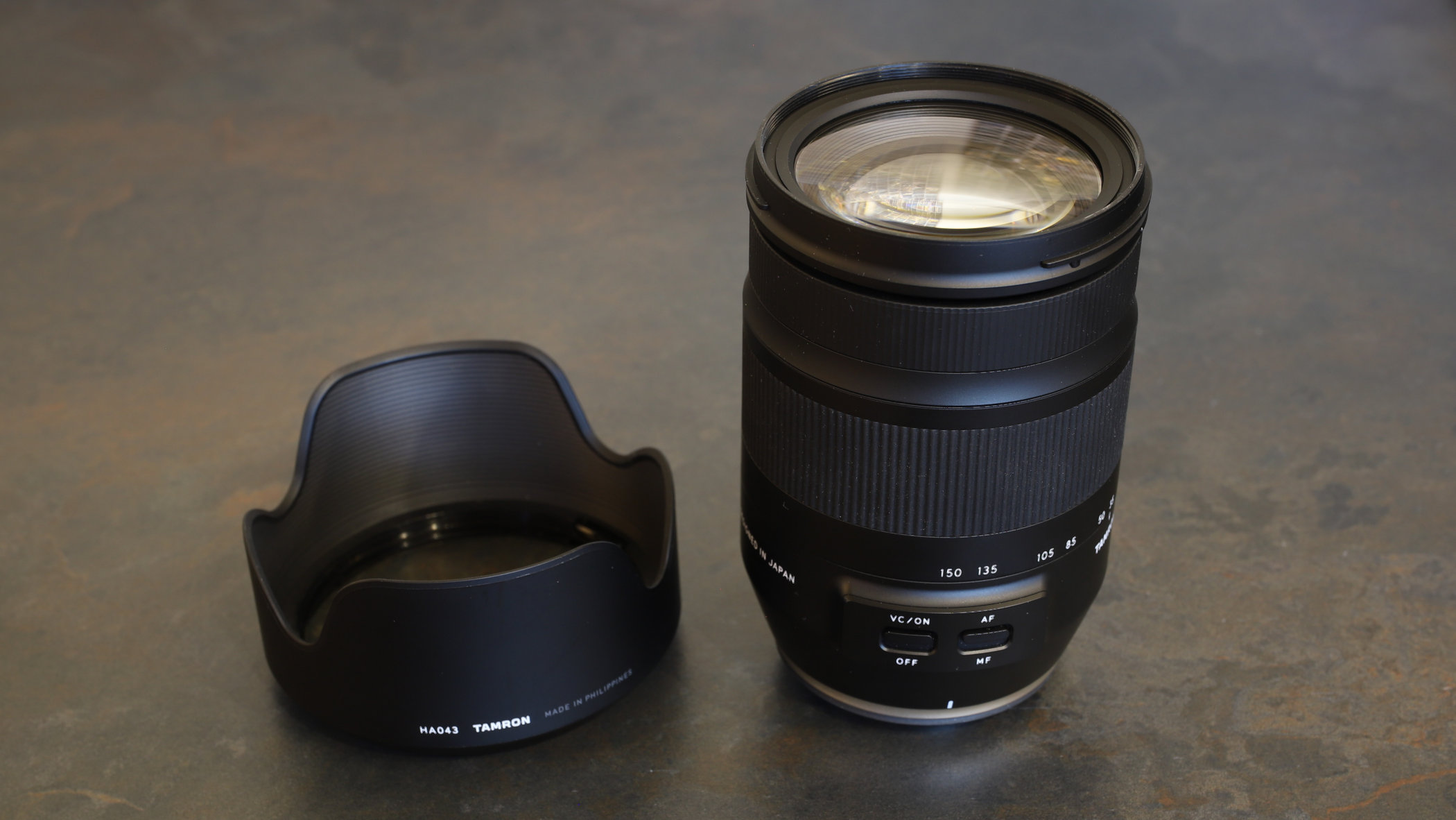
Tamron 35-150mm f/2.8-4 Di VC OSD: Build and handling
The 35-150mm zoom range makes the lens hugely versatile on full-frame cameras, and highly appealing for photographers who don’t often want to go wider than the ‘classic’ 35mm wide-angle focal length. On an APS-C format body, the lens stretches from standard to properly telephoto ‘effective’ focal lengths. Taking the crop factor into account, the zoom range equates to 53-225mm on Nikon cameras and 56-240mm for Canon.
Getting back to full-frame photography, for which the lens is primarily designed, Tamron actively markets it as a zoom for portraiture. As such, the 35mm end of the range takes care of full-length shots, 85mm is preferred for half-length or head-and-shoulders portraits, and 150mm is great for close-up head shots. Even so, it’s certainly not a one-trick pony and the fact that the lens is weather-sealed and has a fluorine coating on its front element to repel moisture and grease, makes it well suited to the great outdoors.


Build quality is of a high order and handling is excellent. A Dual MPU (Micro-Processing Unit) helps to ensure fast and accurate autofocus and effective stabilization. Indeed, the newly developed OSD (Optimized Silent Drive) autofocus system is very quick and virtually silent in operation, while the VC (Vibration Compensation) stabilizer has an effectiveness of up to 5-stops. The high-tech optical path includes three hybrid aspherical elements and three LD (Low Dispersion) elements, plus a nano-structure BBAR (Broad-Band Anti-Reflection) coating for reducing ghosting and flare.
Tamron 35-150mm f/2.8-4 Di VC OSD: Performance
The aperture rating of f/2.8 at the short end of the zoom range shrinks to f/3.2 at 50mm, f/3.5 at 85mm and f/4 from 105mm onwards. Those apertures will seem rather on the narrow side for portraiture purists, who typically prefer the availability of a tighter depth of field. Even so, bokeh is of very good quality when shooting wide-open, especially towards the longer end of the zoom range, and remains good when stopping down a little, helped by a well-rounded 9-blade diaphragm.
Sharpness is excellent across the entire frame, throughout the whole zoom range, even at the widest available apertures. The lens also delivers superb contrast and color rendition, along with impressive control over color fringing and distortions. Vignetting is quite noticeable when shooting wide-open, but you might view that as a plus point for portraiture.
Tamron 35-150mm f/2.8-4 Di VC OSD: Lab tests
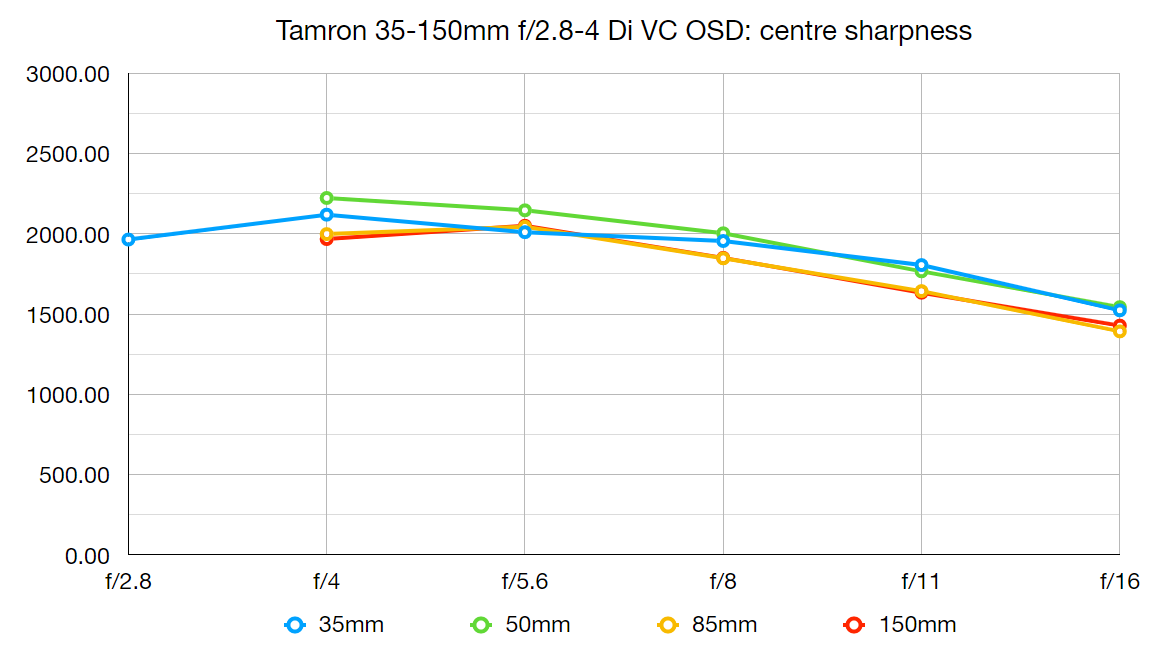
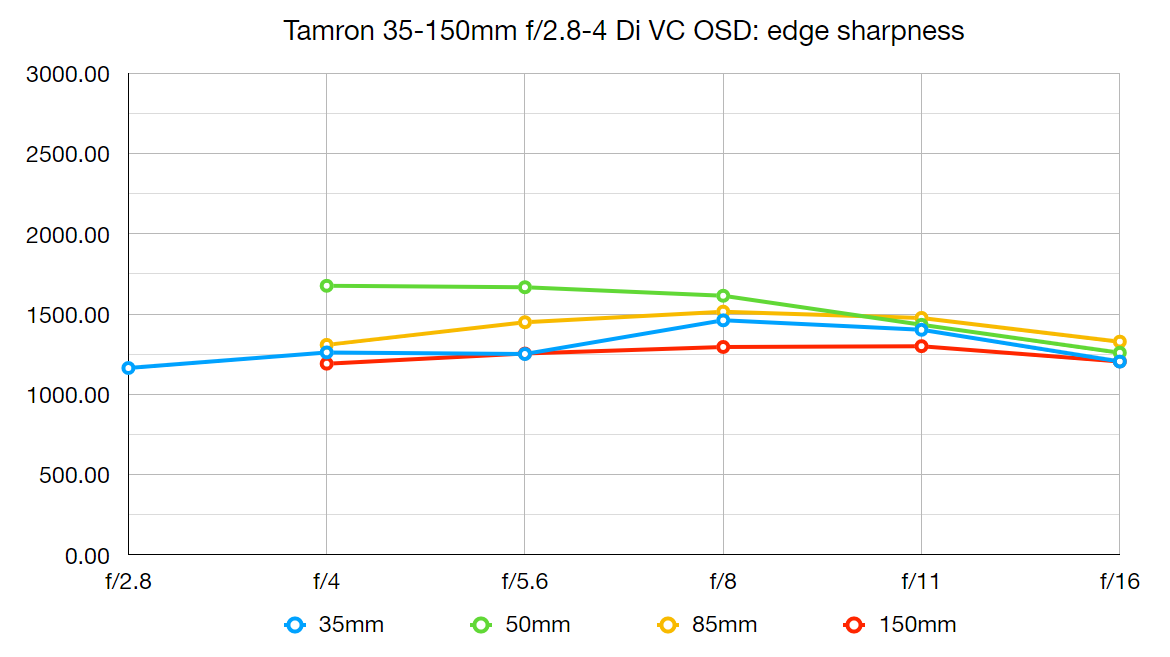
Levels of sharpness are excellent throughout the zoom range, even at the widest available apertures.
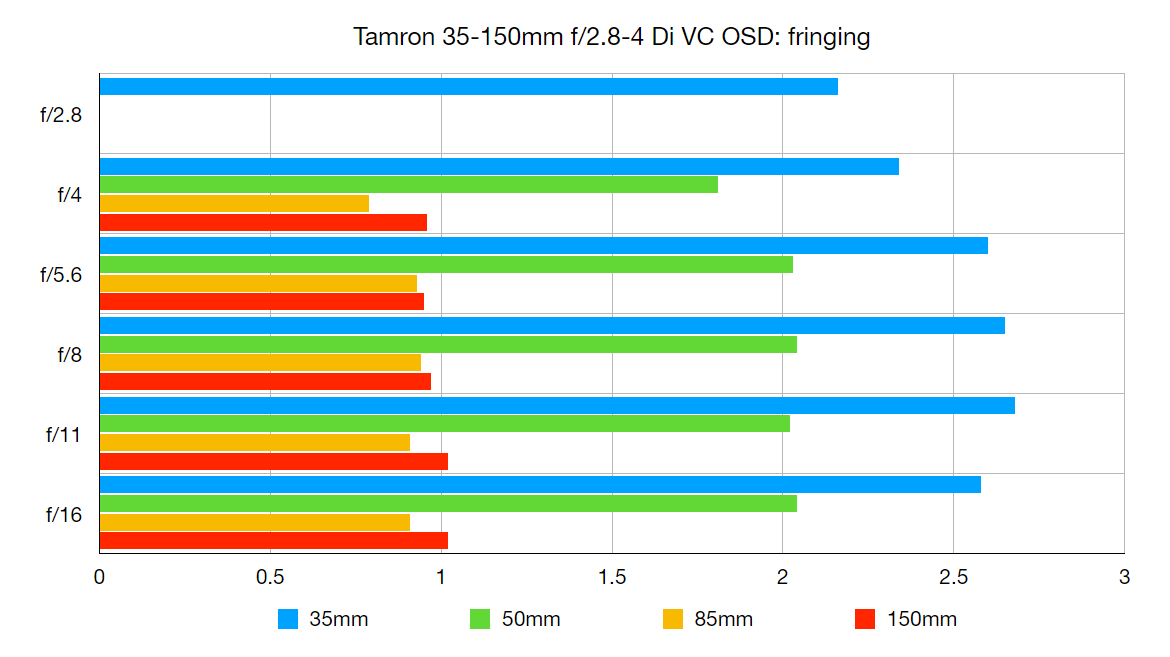
There’s only fairly minor lateral chromatic aberration in the corners of the frame at 35mm, which mostly dies away at longer focal lengths.
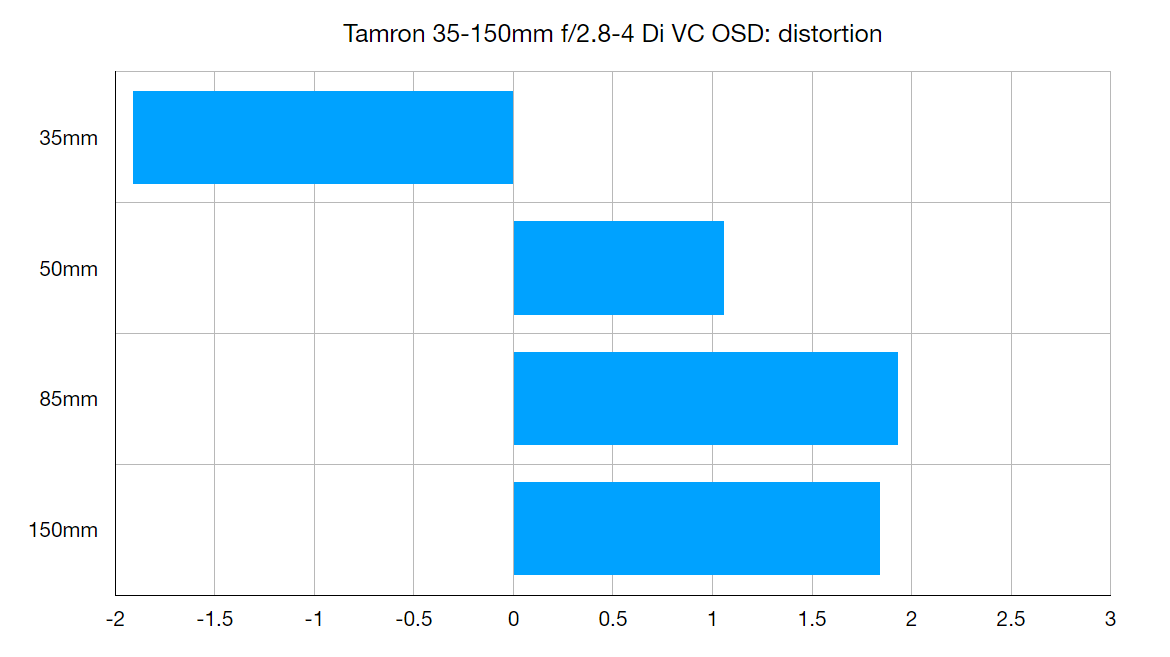
There’s a small amount of barrel distortion at 35mm and a little pincushion from 50mm through to 150mm.
Tamron 35-150mm f/2.8-4 Di VC OSD: Verdict

The Tamron 35-150mm f/2.8-4 Di VC OSD is a smart choice for general shooting as well as portraiture, especially if you find that you run out of telephoto reach more often than you use the short end of your standard zoom lens’s range. Image quality is impeccable in all respects, handling is assured and the autofocus and stabilization systems work a treat. Our only word of warning is that the electromagnetically controlled diaphragm only enables shooting wide-open on some older Nikon DSLRs.
Read more
Best Canon lenses in 2019: go longer, wider and closer with your Canon camera
Best lens for portraits: best 85mm lenses in 2019
Best wide-angle lenses for Nikon cameras in 2019: for DSLRS and Nikon Z
Matthew Richards is a photographer and journalist who has spent years using and reviewing all manner of photo gear. He is Digital Camera World's principal lens reviewer – and has tested more primes and zooms than most people have had hot dinners!
His expertise with equipment doesn’t end there, though. He is also an encyclopedia when it comes to all manner of cameras, camera holsters and bags, flashguns, tripods and heads, printers, papers and inks, and just about anything imaging-related.
In an earlier life he was a broadcast engineer at the BBC, as well as a former editor of PC Guide.
